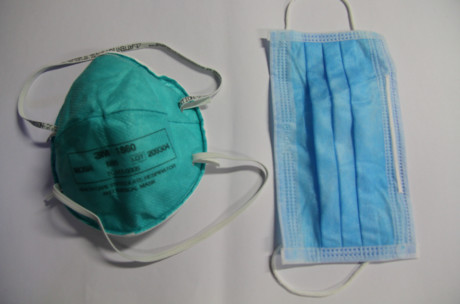Surgical masks provide insufficient protection

New research has found that surgical masks may provide inferior protection against infection spread by droplets, and that respirators should be used instead.
Surgical masks are loose-fitting, disposable masks that cover the mouth and nose, while respirators are designed to fit closer to the face and to filter 95% of airborne particles.
Worldwide, hospital infection control guidelines recommend surgical masks for infections spread by droplets, such as influenza, which currently has Australia's health system under huge pressure.
But the research, conducted by Professor Raina MacIntyre and team from the University of NSW, tested the evidence for such guidelines. Worryingly, the study failed to show protection by surgical masks.
“No efficacy was demonstrated for medical masks alone,” the authors wrote. They found some degree of protection from medical masks, but that larger studies were required to measure their efficacy.
“We showed that even for infections spread by droplets, respirators protect better,” Professor MacIntyre said.
“This turns upside down the long-held beliefs on infection control. It suggests that transmission of infection cannot be neatly classified as large droplets versus airborne particles.
“Probably infections we believe to be spread by large droplets also have some airborne transmission.”
Infections spread by the respiratory route are classified by their mode of transmission.
Airborne infections are transmitted via small, microscopic airborne infectious particles, which hover in the air for long periods of time. Droplet transmission involves large, visible particles, which do not remain suspended in the air, like those expelled during coughing or sneezing.
Guidelines for prevention of influenza are based on the belief that influenza is mainly spread by droplets.
However, many studies also show airborne transmission of influenza, and this study adds to the evidence.
The belief that a surgical mask is good enough for infection prevention and that the more purpose-designed respirators are not necessary came to the fore globally during the 2009 pandemic, and again during the Ebola epidemic of 2014, where many guidelines recommended surgical masks.
During serious epidemics, often drugs or vaccines are unavailable, and frontline health workers require protection from masks, respirators and other personal protective equipment (PPE).
During the Ebola epidemic of 2014, PPE was the mainstay of protection for doctors and nurses. It is also important during influenza pandemics, as vaccine development can take six months from the onset of the pandemic.
“Our research has challenged entrenched practices in infection control from the outset,” Professor MacIntyre said.
“This study confirms and reinforces that respirators should be used to ensure health workers are protected at the frontline.
“It is time that guidelines reflect the available evidence, and that safety of health workers is prioritised.”
The study by Professor MacIntyre is the largest body of work internationally on masks and respirators and it used data from two large randomised controlled trials involving 3591 subjects in Beijing, China. Published in Influenza and Other Respiratory Viruses and available online, it was a finalist for the 2017 Eureka Prize in Infectious Diseases.
$1bn vaccine and antivenom manufacturing facility opens
A $1 billion cell-based influenza vaccine and antivenom manufacturing facility has opened in...
National concussion clinical guidelines now available
The first Australia- and New Zealand-specific guidelines for all forms of concussion — from...
Doctors criticise "risky prescribing agenda"
The AMA and RACGP have expressed disappointment in the Pharmacy Board of Australia's...




![[New Zealand] Transform from Security Awareness to a Security Culture: A Vital Shift for SMB Healthcare — Webinar](https://d1v1e13ebw3o15.cloudfront.net/data/89856/wfmedia_thumb/..jpg)
![[Australia] Transform from Security Awareness to a Security Culture: A Vital Shift for SMB Healthcare — Webinar](https://d1v1e13ebw3o15.cloudfront.net/data/89855/wfmedia_thumb/..jpg)




